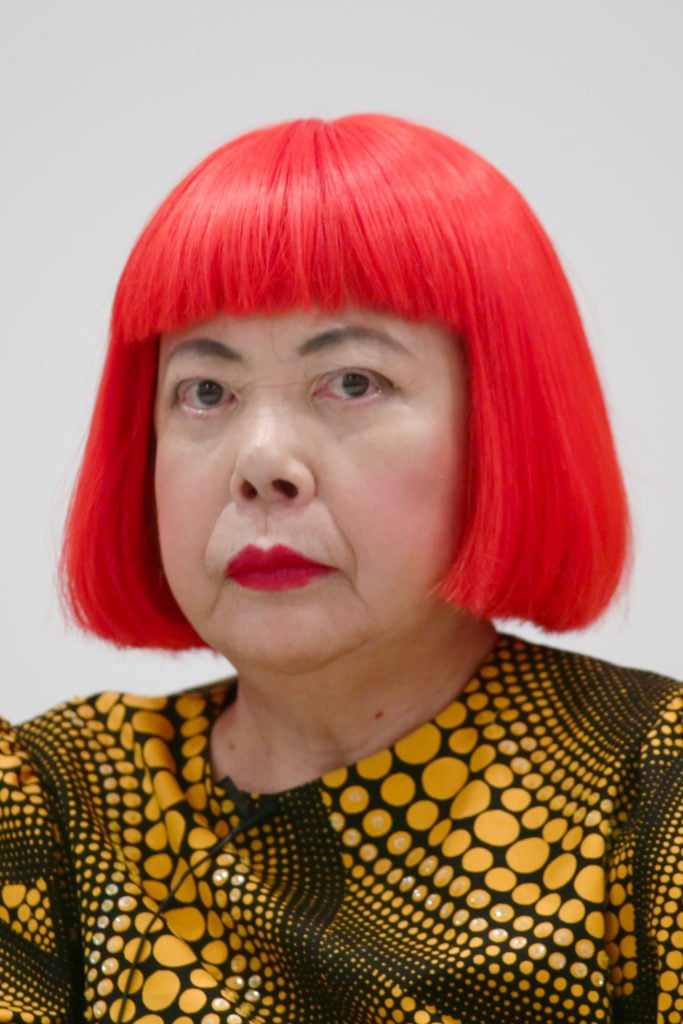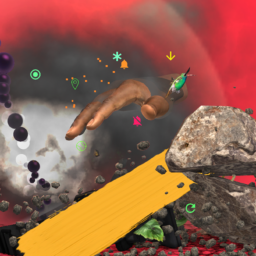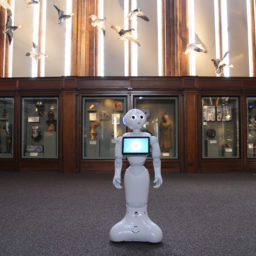Art Industry News is a daily digest of the most consequential developments coming out of the art world and art market. Here’s what you need to know this Monday, October 29.
NEED-TO-READ
Does AI Really Enhance the Museum Experience? – The future is now: robots greet visitors at various Smithsonian museums, while the Akron Art Museum encourages visitors to interact with Dot, its chatbot digital tour guide. The Broad’s head of IT, Heather Hart, says the data it collects through such virtual docents could not only help the museum improve ticketing, but also plan exhibitions and choose merchandise for the gift shop. It’s like crowdsourcing, except you aren’t aware that it’s happening! (New York Times)
What’s Next for the Met After Breuer? – The Art Newspaper talks to Sheena Wagstaff, the Met’s Modern and contemporary art chief, about the department’s future following its withdrawal from the Met Breuer in 2020. She says that, far from feeling dejected, her team is energized to bring what it learned at the Met Breuer to the museum’s flagship building on Fifth Avenue. “Much of what we learned through the Met Breuer,” she said, will help the museum “take stock of what is happening in contemporary practice.” (The Art Newspaper)
Kusama Foundation Condemns Chinese Copies – The veteran Japanese artist is stepping up her fight against plagiarism in China. Ripoffs of her Infinity Rooms and signature dotted works of art “are a serious infringement of the artist’s copyright and international fame and brand,” the Kusama Foundation declared in a statement. Unauthorized copies are a “violation of public morals and decency of a notably malicious nature, and are a contemptible transgression of the originality and copyrights of all artists,” it added. (Guardian, Press release)
Man Arrested for Attacking the Magna Carta – A 45-year-old man has been taken into custody after allegedly using a hammer to smash three holes in the protective glass around the world-famous Magna Carta, which is on view at the Salisbury Cathedral in England. It is one of four original copies of the groundbreaking legal document, which was penned in 1215. (NYT)
ART MARKET
Sotheby’s Asks Christie’s for Help in Forgery Case – A UK judge is allowing Sotheby’s to question specialists at Christie’s over whether they, too, had doubts about an allegedly fake Frans Hals portrait that the publicly traded auction house later sold for $11 million. After questions arose about the work’s authenticity, Sotheby’s had to reimburse the buyer for the full purchase price—and is now suing the dealer Mark Weiss, who owned the work, to cover its losses. Lawyers for Weiss deny he should reimburse the auction house because he sold the painting, which is part of the so-called Ruffini scandal, in good faith. (Bloomberg)
You Can Buy Michael Jackson’s Jackets at Auction – The American businessman and philanthropist Milton Verret is selling the jackets Jackson wore in the music videos for his hits Thriller and Bad at Julien’s Auctions to raise money for musicians in need. Other lots include memorabilia associated with Prince, Madonna, Jimi Hendrix, Elvis Presley, and Aretha Franklin. (Press release)
Ed Dolman Steers Phillips Toward $1 Billion in Sales – The chief executive of the auction house—which has had a notably strong year although it remains smaller than its two major rivals—says his strategy for success is building reliable middle-market sales. As Sotheby’s and Christie’s compete for top consignments and trophy works with risky deals and guarantees, Phillips is on track to clear $1 billion in auction and private sales this year, a goal Dolman set when he arrived. “Sometimes the risk in these high-profile sales is absurd—beyond absurd,” he says. (NYT)
COMINGS & GOINGS
MAXXI Bulgari Prize Winner Announced – Italian artist Diego Marcon has won the 2019 prize from the MAXXI museum in Rome. The institution will acquire Marcon’s 2018 film Ludwig for its collection. The work features a computer-generated boy singing a song about human existence written by the artist. (ARTnews)
Inaugural Toronto Biennial Releases Artist List – The Canadian metropolis is getting its own biennial in September 2019 (running through December). Curator Candice Hopkins, one of the curators of last year’s documenta 14, has teamed up with Tairone Bastien as joint curators. Participating artists include British artist Shezad Dawood and New Mineral Collective. (Press release)
The Bronx Museum Names Its New Space After Late Director – The Bronx Museum of the Arts has named its new Manhattan outpost The Block Gallery, after the museum’s late executive director Holly Block, who died last year. The exhibition and artist workspace at 80 White Street will welcome its first artists-in-residence in January 2019. (Press release)
Artist Harold Stevenson Dies at 89 – The acclaimed Harold Stevenson, an artist who appeared in Andy Warhol’s films and who famously installed a larger-than-life painting of a nude man, The New Adam, at the Guggenheim in 1962, has died at his home in Oklahoma. (ARTnews)
FOR ART’S SAKE
Bauhaus Fires Its Press Officer Over Mishandled Threats From the Far Right – After coming under intense scrutiny from the art world for canceling a planned concert amid threats far-right groups, the Bauhaus Dessau Foundation has dismissed its press officer. The Bauhaus’s director, Claudia Perren, said in a recent interview that the statement to press did not communicate the foundation’s intentions for canceling the concert directly enough. (Die Zeit)
Dakis Joannou Says a Museum Full of Blue-Chip Works Is Boring – The billionaire Greek collector says that artistic value has become confused with monetary value amid the latest art-market boom. “A museum full of masterpieces is a very boring thing,” he says, bemoaning the decline of middle-market collectors. He also thinks some artists need to cut back on their production. “They should rest to create better,” he says. (El Pais)
Why a Gleaming Tower Is Still Threatening the Nasher – For seven years, the tranquility of the Nasher Sculpture Center in Dallas, Texas, has been dampened by what has become known as The Glare—intense reflections bouncing off of a neighboring luxury office tower and creating distracting patterns of light inside the building and its garden. Now, to add insult to injury, the situation has become the subject of the British-produced TV series “Engineering Catastrophes,” which runs on the Discovery Channel in early November. (Dallas News)
Giant Anti-Opioid Spoon Arrives in Boston – The sculpture, which was installed outside Purdue Pharma’s headquarters in Connecticut in June as part of an anti-opioid protest, has resurfaced in Boston. Activists installed the work outside the Massachusetts State House last Friday as a “gift” for Attorney General Maura T. Healey, who has helped lead the State’s fight against the opioid crisis. The artist Domenic Esposito created the work after his brother’s fatal overdose and launched the so-called “Spoon Movement” with his gallerist Fernando Alvarez. (Boston Globe)









